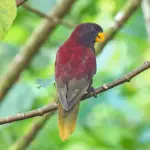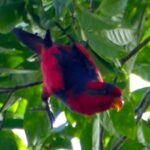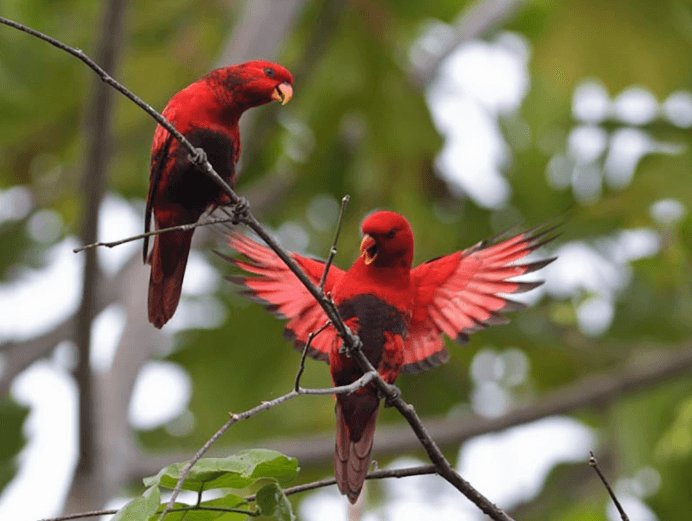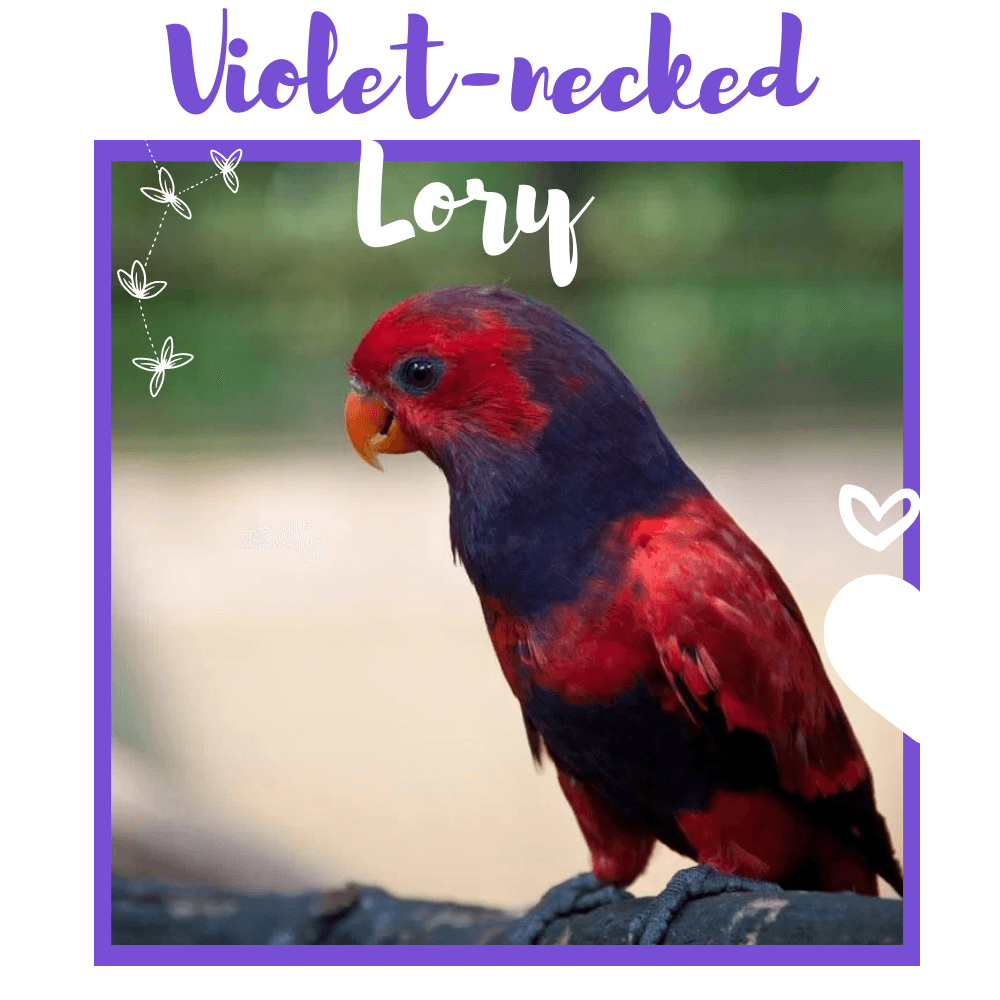
Violet-necked Lory 27 cm. Red; bill orange; collar violet-blue, broad in some birds, absent in others; belly to undertail-coverts dark purplish-blue;
scapulars purple-tipped black; greater wing-coverts and flight-feathers edged black; tail purple-red above, brownish-red below; legs grey.
Immature has underparts red with purplish edging. Race riciniata has a violet collar usually extending from the breast up onto hind crown, red scapulars; obiensis has black scapulars.
Editor’s Note: This article requires further editing work to merge existing content into the appropriate Subspecies sections. Please bear with us while this update takes place.
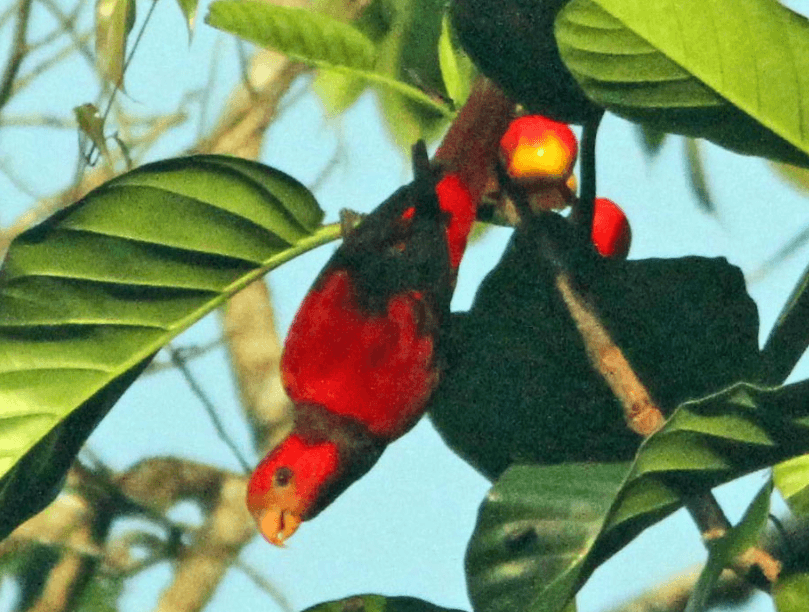
Proposed race atrocaerulea is doubtfully valid, as based on juveniles; guenbyensis and insularis are synonyms of riciniata. Three subspecies were recognized.
Subspecies
Eos squamata riciniata Scientific name definitions
Distribution
Eos squamata obiensis Scientific name definitions
Distribution
Eos squamata squamata Scientific name definitions
Distribution
Distribution
Editor’s Note: Additional distribution information for this taxon can be found in the ‘Subspecies’ article above. In the future we will develop a range-wide distribution article.
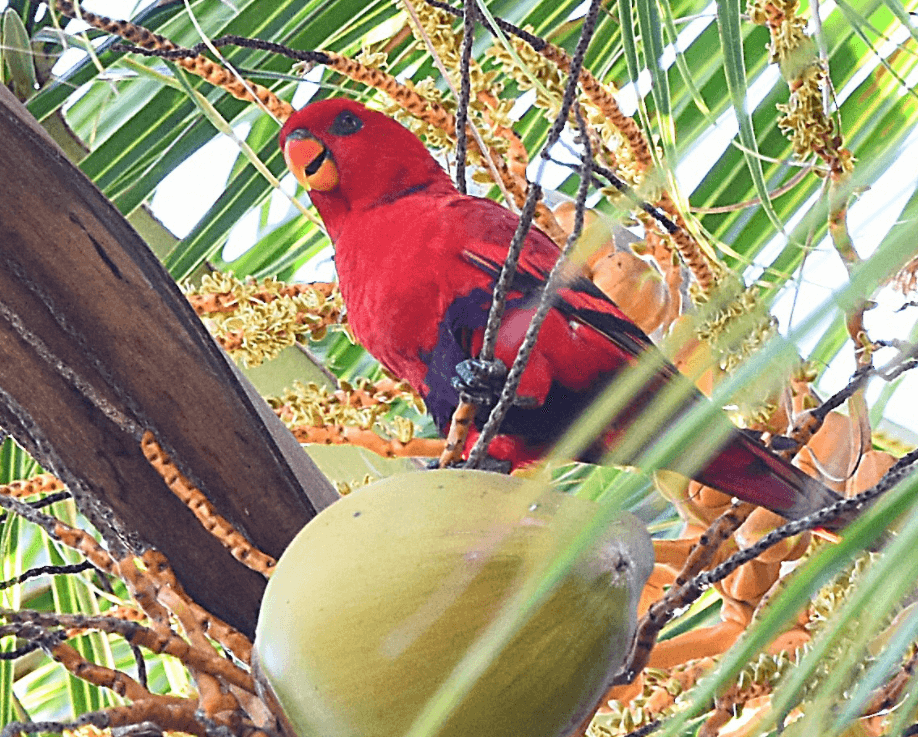
Habitat
Lowland forest and forest edge, mangroves, disturbed forest and scrubby secondary growth adjacent to cultivation, coconut plantations; also montane primary forest up to 1220 m.
THE AMAZING VIOLET-NECKED LORY
SOURCE: THE FAUNA WORLD
Movement
Daily movements between main islands and small offshore islets noted; also noted to form large flocks, a habit which can make it common in one area and rare in another, suggesting some form of larger-scale nomadism.
Diet and Foraging
Flowering sago palm Metroxylon, unripe figs (Ficus), the nectar of Erythrina flowers.
Sounds and Vocal Behavior
The repertoire was quite extensive. In-flight, utters a disyllabic “ksi-leet!” or similar. When perched, calls include short metallic notes, high-pitched hissing notes, short flat-pitched whistles, nasal screeches, and shriller notes. Also utters series of a repeated single short note, either well-spaced or in a fast sequence.
Breeding
No information from wild. In captivity: two eggs; incubation c. 27 days; nestling period c. 80 days.
Conservation Status
Not globally threatened. CITES II. A BirdLife “restricted-range” species. A range of 70,700–435,080 birds was estimated for the population of the N Moluccas,
but survey work in the 1990s gave figures of 115,400–283,700 for the proposed Lalobata reserve (Halmahera) alone; around 2980 birds are estimated to have been trapped in 1991, suggesting that trade pressure is not excessively high, but it has been recommended that a biologically safe rate of annual offtake should be established.

